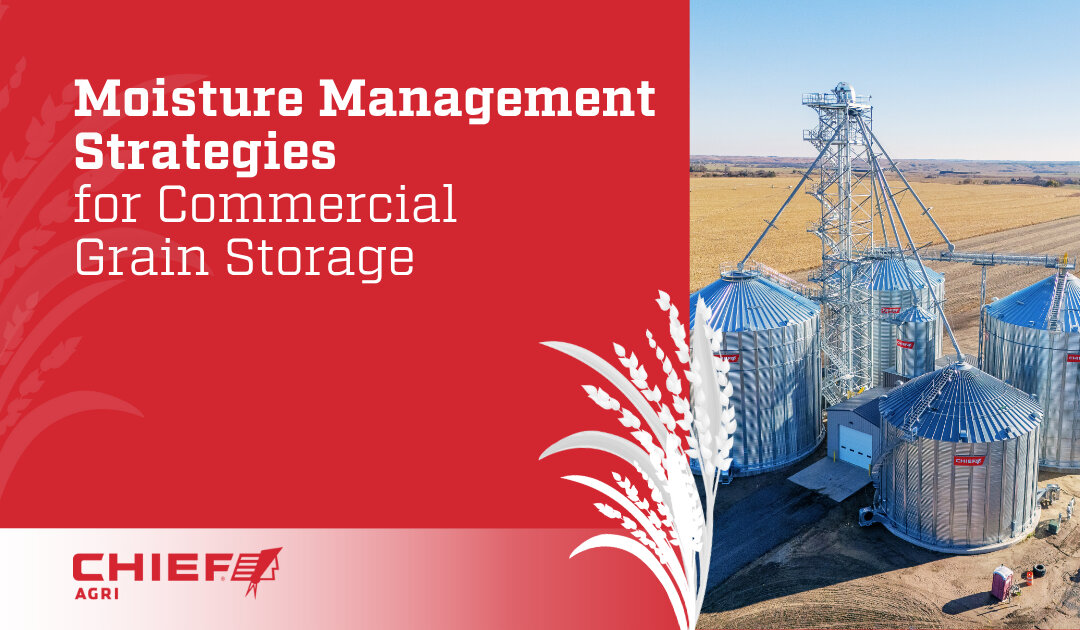Using Grain Storage Technology to Control Grain Moisture
Effective moisture management is vital for successful commercial grain storage operations. Without it, grain quality can rapidly deteriorate, leading to significant economic losses. The battle with grain moisture is won through a combination of proactive measures and real-time responses to changing conditions.
Chief Agri offers comprehensive grain storage solutions that empower commercial operators with advanced strategies and cutting-edge technology for moisture management. We’ll discuss the critical aspects of proactive grain bin moisture control and moisture prevention, equipping you to preserve harvest quality and maximize profitability.
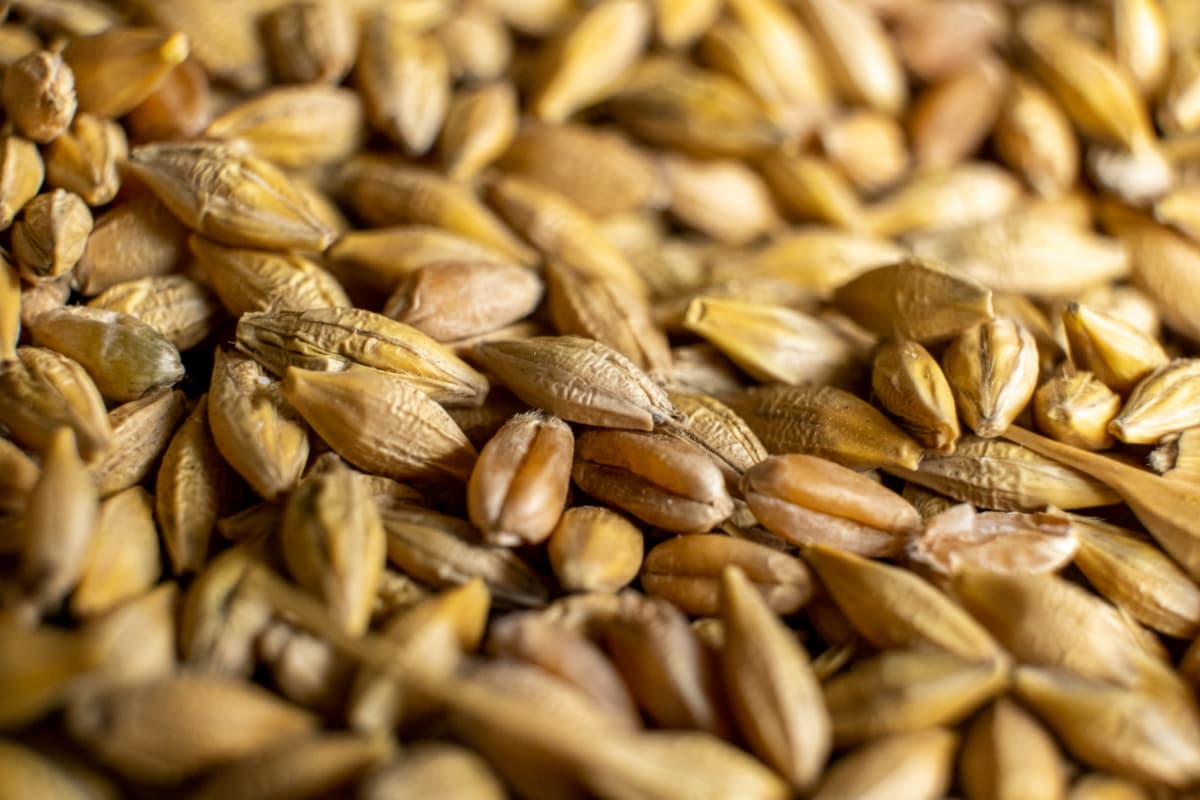
Understanding the Science of Moisture in Commercial Grain Bins
Grain moisture refers to the water content present within individual kernels. This moisture is dynamic, constantly interacting with the surrounding environment within commercial grain bins. Several factors influence moisture accumulation, including harvest conditions, ambient humidity, and temperature fluctuations.
Excessive grain moisture is a serious problem that can lead to a cascade of detrimental effects:
- Mold and fungal growth: High moisture levels create an ideal breeding ground for various molds and fungi, which can produce harmful mycotoxins.
- Insect infestations: Elevated moisture attracts pests, leading to infestations that further degrade grain quality and consume valuable product.
- Reduced grain quality: Beyond visible spoilage, excess moisture can negatively impact crucial grain attributes like germination rates, test weight, and overall market value.
- Spoilage and caking: When grain moisture is too high, kernels can stick together, forming clumps or “caking,” making handling and processing difficult.
- Safety hazards: The presence of mycotoxins produced by molds poses significant health risks to both humans and livestock.
This underscores the critical importance of proactive moisture prevention as an integral part of comprehensive moisture management strategies.
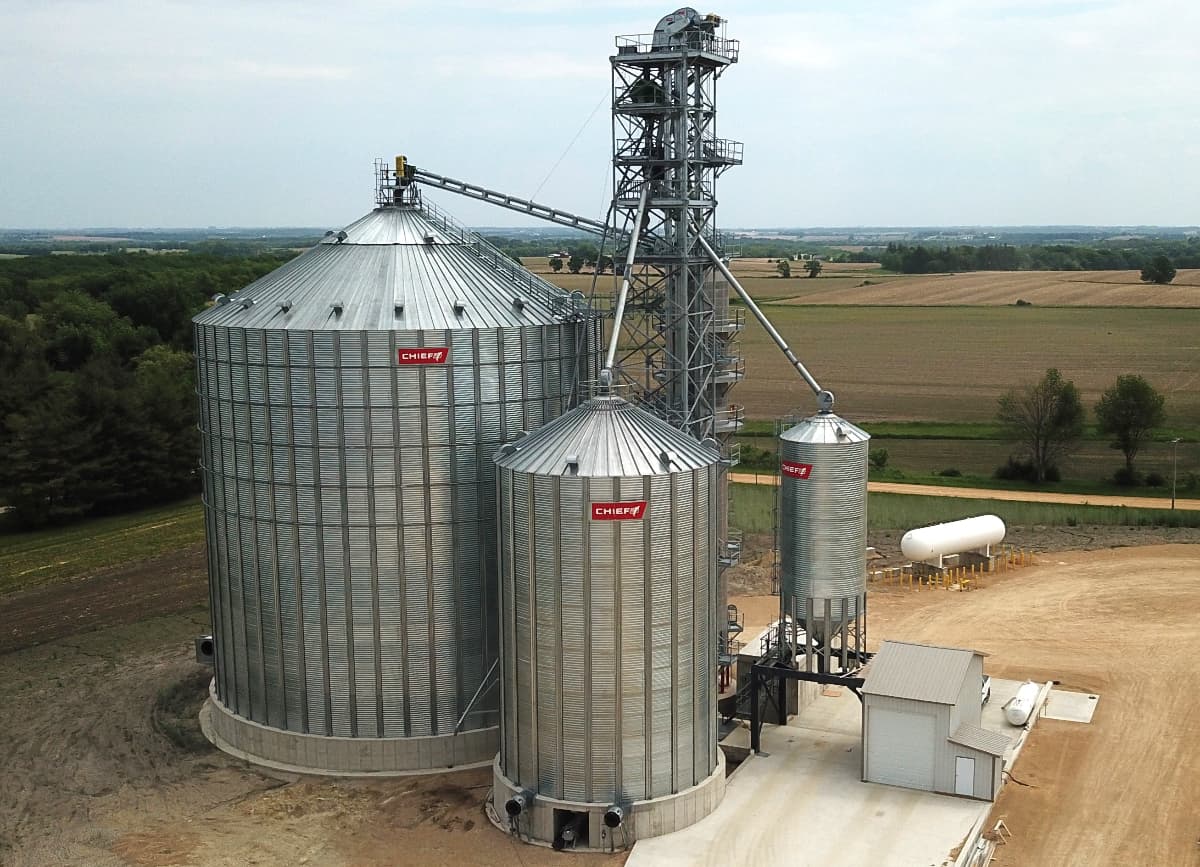
Foundational Moisture Management Strategies for Commercial Grain Storage
Effective moisture management begins with foundational practices that lay the groundwork for successful long-term grain preservation.
Pre-Storage Moisture Control
Effective moisture management begins pre-storage, emphasizing the importance of harvesting grain at its optimal moisture content, which varies by grain type. Before storage, proper cleaning and drying are crucial to eliminate debris and reduce moisture accumulation, ensuring long-term grain preservation. Finally, understanding aeration drying best practices, including fan sizing and airflow, is essential for efficient and effective drying.
RELATED: Grain 101: Grain Types and Optimal Storage
Storage Structure Considerations
The integrity of your commercial grain bins is crucial for moisture prevention. Select bins appropriate for your climate and grain type, ensuring they have proper ventilation and sealing features. Regularly inspect and maintain all structural components—including seals, insulation, roofs, walls, and foundations—to prevent external moisture intrusion.
Aeration Systems: The Backbone of Grain Bin Moisture Control
Aeration involves circulating ambient or conditioned air through the grain mass to remove excess moisture and regulate temperature, which helps equalize grain moisture content and prevent hot spots.
Types of commercial grain bin aeration systems include:
- Natural aeration: Relies on natural air currents, often less effective for precise control.
- Forced aeration: Uses fans to push or pull air through the grain, offering more control.
- Supplemental heat aeration: Incorporates heaters to warm the air, enhancing drying efficiency in specific conditions.
Calculating optimal airflow rates is crucial for effective moisture management, requiring an understanding of specific grain types’ resistance and appropriate fan capacity for your commercial grain bins. Strategic aeration cycles, based on external temperature, humidity, and grain moisture content, are essential for successful grain bin moisture control.

Advanced Moisture Management Techniques and Technologies
Beyond foundational practices, modern grain storage technology offers sophisticated tools for precise moisture management.
Automated Grain Monitoring Systems
Real-time data is invaluable for proactive moisture management, with advanced sensors continuously monitoring temperature and grain moisture within the grain mass. This continuous monitoring enables early detection of issues, preventing spoilage and significantly enhancing grain preservation. Furthermore, integrating this data with automated aeration controls allows systems to optimize fan operation for superior and energy-efficient grain bin moisture control.
Grain Conditioners and Controllers
For precise environmental management, advanced grain storage technology, like grain conditioners and controllers, utilizes humidity sensors and algorithms to create optimal storage conditions. Humidity sensors prevent aeration during high external humidity, thereby avoiding condensation, a major cause of spoilage. These intelligent controllers analyze external and internal grain conditions to optimize aeration cycles, ensuring energy-efficient and optimal moisture management.

Supplemental Drying Technologies
Supplemental drying is often employed when grain is harvested at higher-than-desired grain moisture content or when environmental conditions are unfavorable for natural or forced aeration drying alone. This can be either low-temperature drying or high-temperature drying.
- Low-temperature drying: Uses lower heat and longer drying times, often with natural air or slightly heated air, to preserve grain quality.
- High-temperature drying: Utilizes higher heat for faster drying, but requires careful management to prevent damage to the grain.
Research and development continue to bring forth innovative drying technologies that prioritize energy efficiency while maintaining effective moisture prevention.
Pest and Mold Management Integration
Effective moisture management is crucial for pest and mold control by eliminating conditions conducive to their growth and reproduction. While moisture prevention is primary, fumigation or other treatments may supplement it for existing infestations, forming part of a comprehensive grain preservation strategy. Ultimately, a holistic approach integrating diligent moisture control with Integrated Pest Management (IPM) ensures optimal grain preservation.
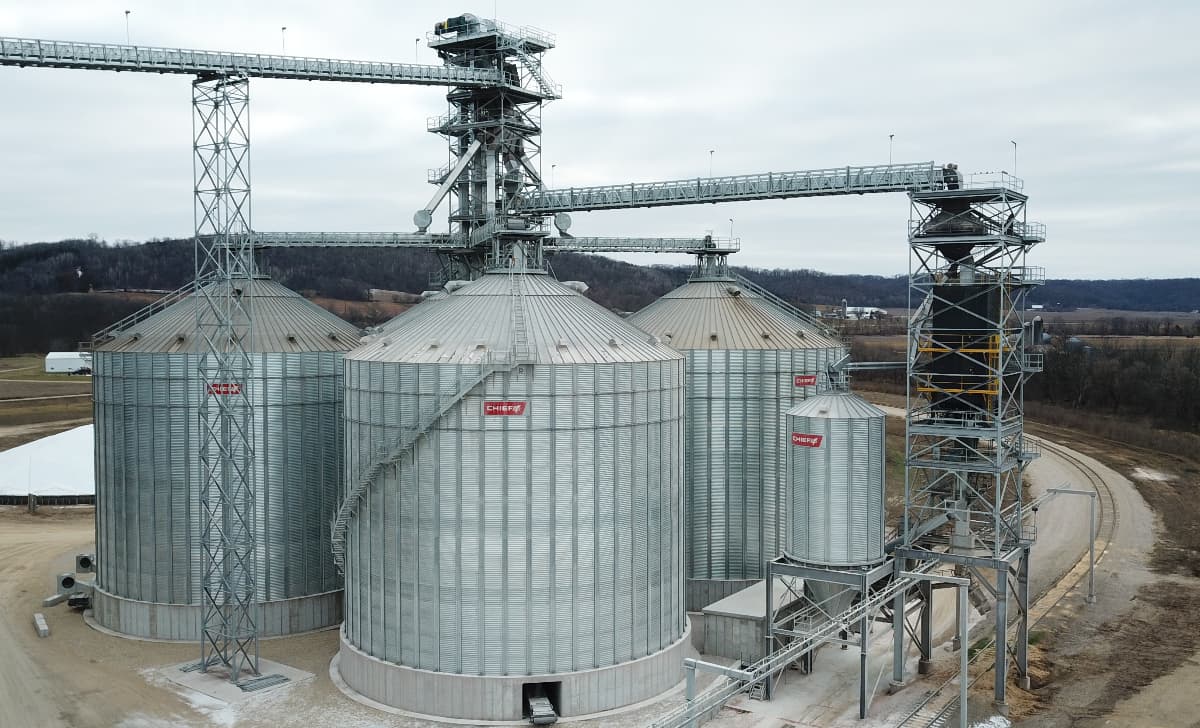
Best Practices for Ongoing Moisture Management and Grain Preservation
Effective moisture management isn’t a one-and-done task; it’s a continuous, active commitment to ensuring grain preservation. It demands consistent attention and strategic effort long after the grain is initially stored. It should guard against moisture problems, but also respond appropriately should they occur.
Regular Inspection and Monitoring
Regular visual inspections of commercial grain bins are essential to identify any early signs of problems. Look for condensation on bin walls, unusual odors, visible mold growth, caking of grain, or insect activity, as these are all indicators of potential moisture management failures.
Handheld probes and core sampling allow for direct measurement of grain moisture content at various depths and locations within the bin. These provide a more accurate picture than surface observations alone.
Grain Turning and Blending
Turning grain in commercial grain bins helps manage moisture and quality by breaking up hot spots, equalizing grain moisture content, and improving aeration. Additionally, strategically blending drier grain with wetter grain can help achieve safe overall moisture levels, but this requires precise calculation and continuous monitoring.
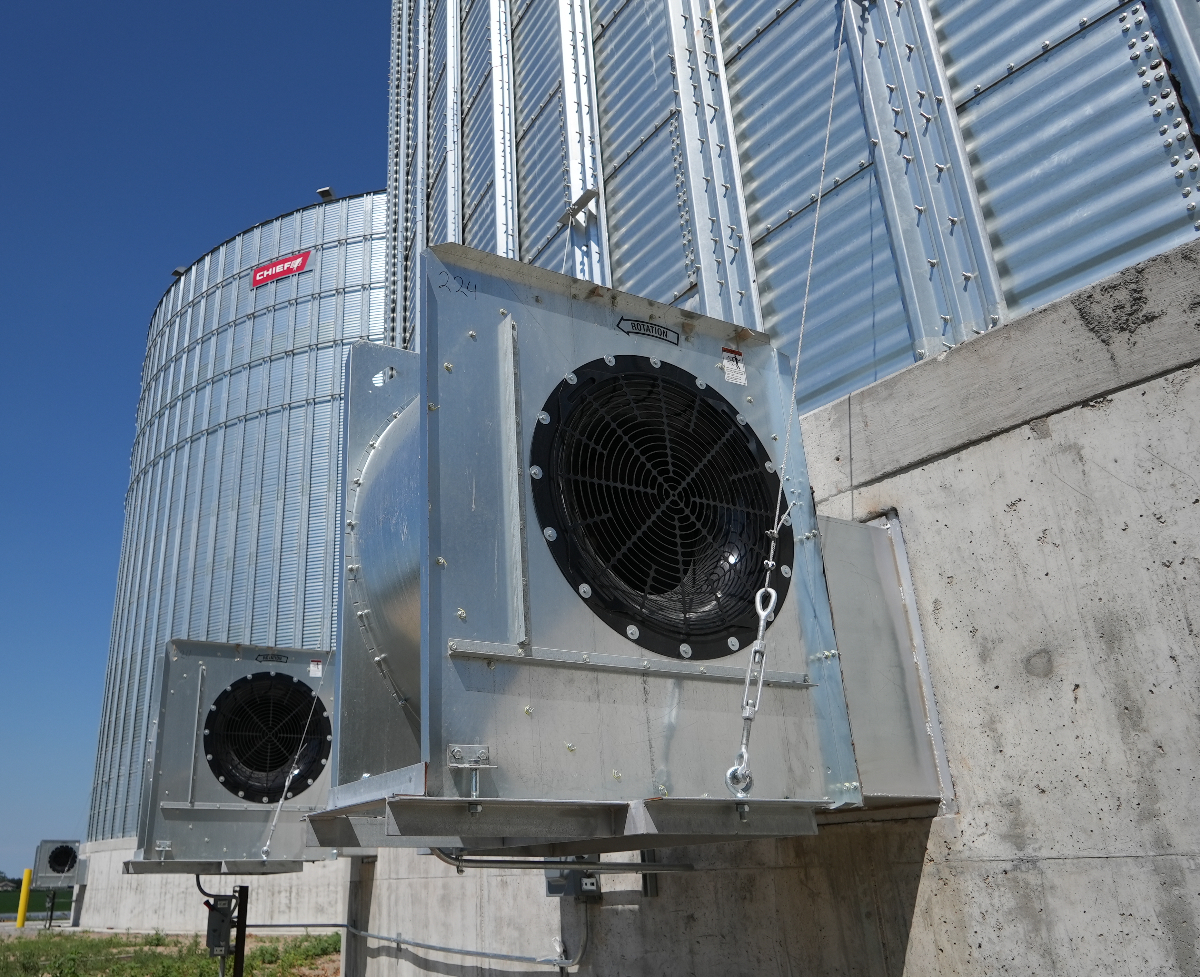
Contingency Planning for Moisture Emergencies
Despite best efforts, moisture emergencies can occur. Being prepared ahead of time with an action plan is the best way to guard against catastrophic loss of grain stores. An action plan should have clear steps to follow if a moisture problem is detected.
- Act quickly! Isolate the affected grain if possible, increase aeration, and consider immediate drying or turning.
- Execute emergency aeration and drying. Have a plan in place for emergency aeration procedures, such as maximizing fan usage or deploying portable drying equipment.
- Minimize losses. Salvage as much grain as possible by rapidly addressing the moisture issue and preventing further degradation.
Record Keeping and Data Analysis
Data-driven decisions significantly improve moisture management outcomes. Documenting moisture readings, aeration cycles, and treatments creates a historical log, enabling you to track trends and identify recurring issues. Analyzing this past data helps refine future aeration schedules, anticipate problem areas, and inform decisions for enhanced moisture prevention and grain preservation.

Mastering Moisture Management for Long-Term Grain Preservation
Managing grain moisture safeguards your investment and ensures long-term profitability in commercial grain storage. Effective grain bin moisture control is a continuous process that requires vigilance and strategic use of technology for moisture prevention. Doing so leads to undeniable benefits like reduced harvest losses, enhanced grain quality, and maximized market value.
Chief Agri is dedicated to providing high-quality grain conditioning equipment that empowers commercial grain storage producers to maintain their grain at proper moisture content levels. Our solutions are designed to ensure optimal grain preservation and profitability for your operation.
Contact Chief Agri’s sales team today to discuss how our innovative products can support your moisture management needs and secure your harvest each year.

